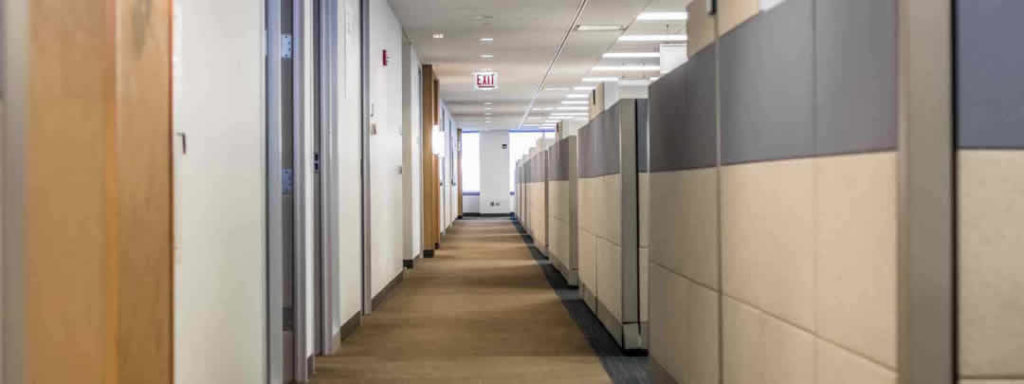Flexible Work Environments Spell The End Of The Office Desk
JENN GVOZDEK
MARKETING MANAGER
JUNE 8, 2018
The way we organize our offices not only affects where we get work done but how. In the past thirty years, the standard office has undergone dramatic changes that have left the drab grids of cubicles behind for good. The standard desk, devoted to one individual, has become less useful with each passing year. One of the driving forces behind this trend is the growing optimization of digital communication tools that are enabling offices to do away with desks and cubicles. How can merely changing an office’s layout boost creativity, productivity, and morale? The answers may surprise you.
HOT DESKING
“Hot Desking” or “Hoteling” is far from a new concept but is still often misunderstood. It is the practice of employees picking their daily work desk fresh each day. In the past, only the most advanced workplaces could afford the digital tools necessary to populate a shared work phone with each employee’s contacts. These days, equipping employees with the right tools and creating shared points of digital communication make it a smooth transition for any office. A study from the University of Surrey found that Hot Desking increased organizational identity, and digital tools were the main reason.
STAYING FLEXIBLE
Some organizations are starting to do away with desks entirely. Silicon Valley has set trends in countless ways, but one of the most radical may be their flexible work environments. For example, Facebook provides each employee a laptop, freeing them from the anchor of a desk entirely. Workers can work in the environment that feels right, utilizing open shared space for group projects and retreating to isolated nooks to focus in. The name of the game is motion. Apple prioritizes keeping their employees on the go; creating opportunities for chance connections, innovative ideas, and interesting conversations that can jumpstart a project. In that dynamic and mobile environment, a grid of desks is no more than an obstacle.
MORE THAN FREEDOM
Letting employees move freely can’t be the last stop for office spaces. The right digital communication tools can make or break a modern office. Holding consistent meetings for goal setting is an essential part of keeping a team connected more broadly, and not just through Slack or email. Younger workers, especially, value regular feedback on projects, presented clearly to the whole team. In addition to laptops, cell phones, and tablets, digital signage is a key focal point for optimizing communication across an entire company. Though you’re reducing structure in the office, it becomes that much more important to keep vital information centralized.
Desks remain useful tools in the workplace, but the rapid optimization of the office structure is carting them out the door. As companies warm up to these flexible work environments, it becomes paramount that the best tools are provided, the right steps are taken, and the correct frame of mind is adopted. The desk may be obsolete, but organizational communications are now more critical than ever. Making sure employees have the right information on the right device at the right time will make or break the success of flexible work environments.

MARKETING MANAGER
Jennifer is Marketing Manager at Omnivex Corporation. She joined Omnivex in 2011 and is responsible for all aspects of marketing including strategy, communications, and execution. Jennifer has helped Omnivex redefine what digital signage is and how it can help organizations enhance and extend their two most valuable assets – people and data.
Jennifer brings 20 years of software industry marketing experience. She has held numerous marketing positions at software companies including PeopleSoft, Longview Solutions, and Microsoft. Prior to joining Omnivex, Jennifer was the Industry Marketing Manager for Microsoft Dynamics in Canada.

